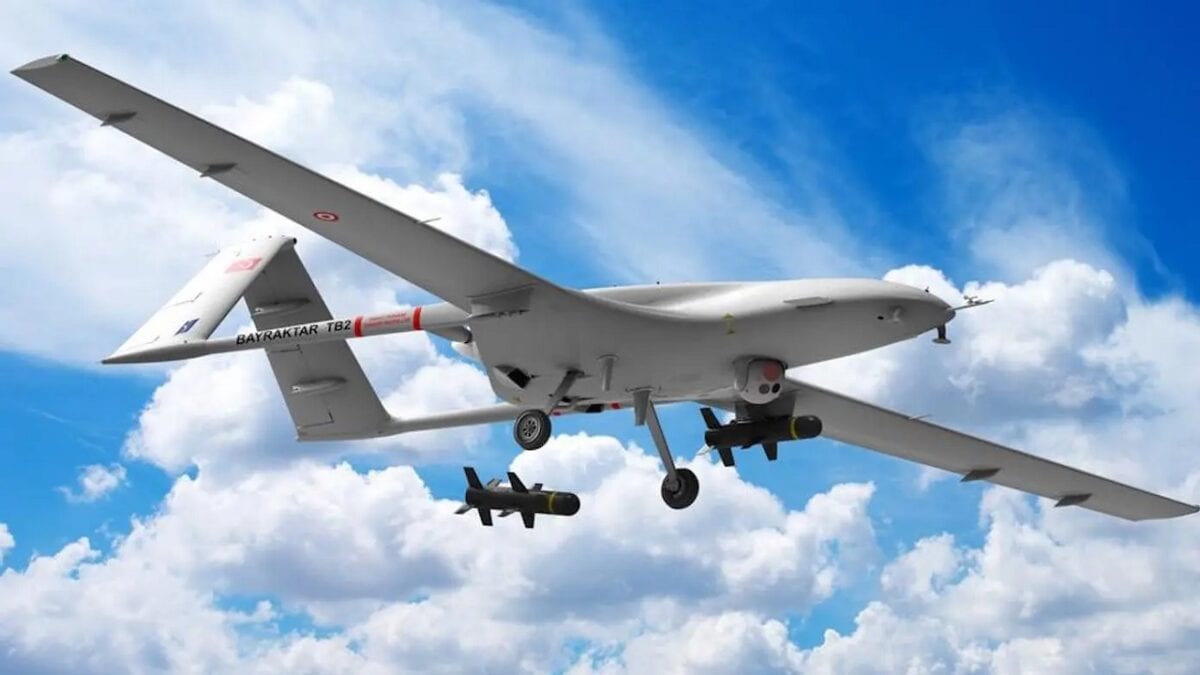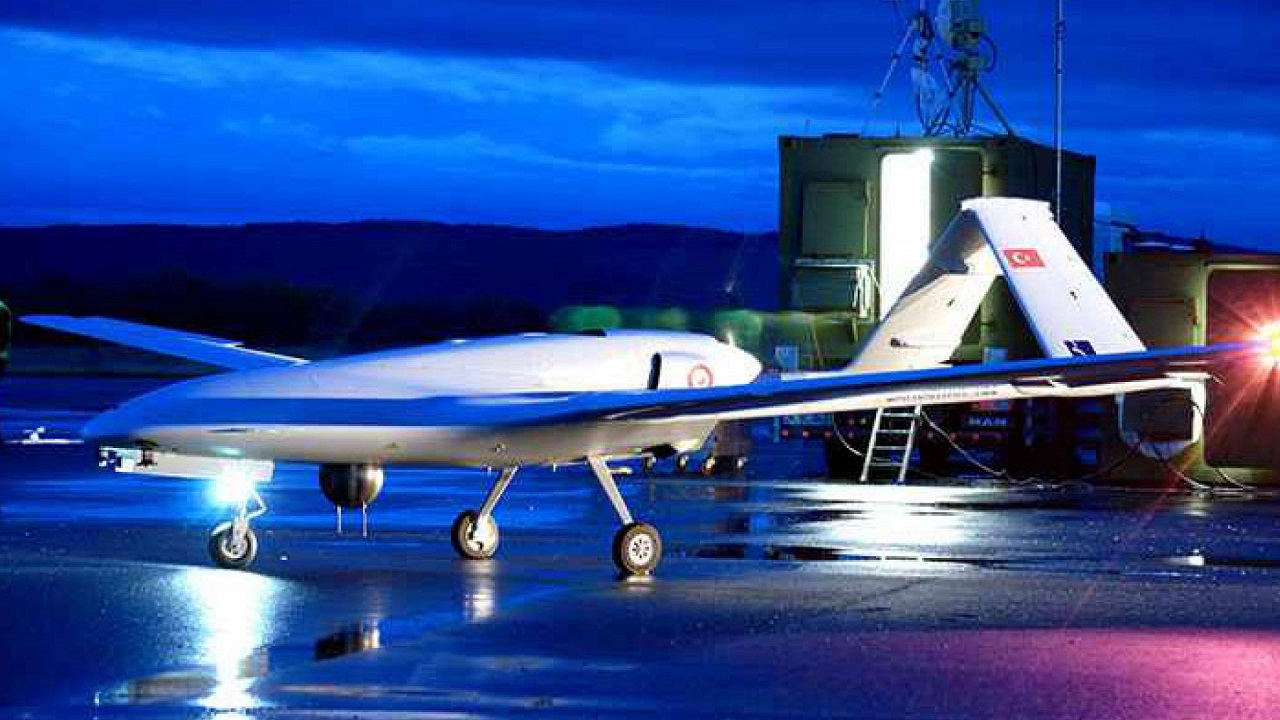The Russia-Ukraine conflict has caused many defense experts and military leaders to posit the existence of a new “mini-domain:” the air littorals. This is the region from the ground to approximately 1,000 ft.
As the current conflict demonstrates, this new zone is becoming increasingly central to how the war on the ground is evolving. The air littoral region has seen the proliferation of many new capabilities, most notably in the form of low-flying drones, but also including cruise and anti-tank guided missiles, and even ground-hugging manned platforms.
Air Littoral Requires New Radar Technologies
This zone of extreme lethality calls for new integrated defense capabilities to address both airborne threats – particularly drones – and ground-fired weapons. To be effective against mass deployments of drones and missile strikes, defenses will need new multi-mission radars that can track thousands of airborne and ground targets simultaneously. Fortunately, such a capability now exists and can be rapidly deployed.
Drones are Flying Lower Than Ever
While drones have had a significant presence in conflicts across the globe for nearly two decades, the Russia-Ukraine war marks a fundamentally new stage in the employment of unmanned aerial systems (UAS) in combat. Unable to employ traditional air assets to achieve air superiority, both sides have had to look elsewhere for a domain and set of technologies that could deliver the decisive advantage once provided by classic airpower. This has led them to focus on the air littorals and flood this domain with UASs of all sizes and capabilities.
Ukraine has successfully operated a dizzying array of drones, from the medium-size Turkish Bayraktar, which can carry munitions and do intelligence collection, to smaller U.S. Puma, Phoenix Shadow, and Switchblade loitering munitions, along with purchases from hobby shops and third parties, most notably China. So-called Kamikaze drones have destroyed hundreds of tanks and armored vehicles and performed well against air defense systems. Among the defense items Ukraine has requested from the U.S. are 1,000 additional drones.
While many Ukrainian and Russian drones have been reportedly shot down or disabled, they have still managed to exert considerable influence on the battlefield. This is why Russia, which has boasted of its development of sophisticated UASs, is now jerry-rigging commercial platforms for weapons delivery and has reportedly contracted with Iran to provide a large number of drones.
Drones are the ‘IT’ Munition of Conflict
Virtually every nation observing the current conflict has drawn the same lesson: UASs will play an increased role in future combat, particularly high-end conflicts, and the air littorals will be a major zone in which future wars will be fought. The U.S. is developing a new generation of rotary wing platforms that is intended to exploit air littorals to conduct deep operations. These and other aerial platforms will be equipped with Air Launched Effects, essentially miniature drones that will carry sensors, EW packages, or lethal warheads. Other nations will certainly attempt to follow suit leading to the further proliferation of platforms and engagements in this near-Earth zone. As one European observer commented: “Everybody now wants drones, special drones, unjammable and whatsoever. Everybody will have millions of drones that can’t be defeated.”
In addition to drones, air littorals are also the zone of operations of a wide range of cruise and anti-tank guided missiles, rocket propelled grenades, artillery shells, and mortar rounds. Similarly, defenses such as short-range, anti-aircraft missiles, active protection systems to defeat anti-tank missiles, and even drones designed to defeat other drones, such as the U.S. Coyote system, will be traversing this domain.
The U.S. Works to Advance its Drones
The Department of Defense (DOD) recognizes the need to defeat threats in air littorals, particularly when posed by small and medium-sized drones. It created the Joint Counter Small UAS Office which has deployed a set of early countermeasures. The Army also has invested in the Maneuver Short-Range Air Defense system (M-SHORAD). A laser-equipped version of M-SHORAD, which will be particularly effective against smaller, low-flying Class 1, 2, and 3 drones, is about to be deployed.
An effective defense against the mass of manned platforms, drones, weapons, and munitions that will flood the air littorals in any high-end conflict will require more and better sensors than those currently fielded. Existing radars are challenged by environmental clutter, the small size of many of these objects, and their ability to change speed and direction. The demands of surveilling the future low-altitude battlefield and effectively tracking the myriad of objects traversing this space exceed the capabilities of existing sensor systems.

TB2 Drone. Image Credit: Creative Commons.
Fortunately, there is a solution. The Israeli company Elbit has developed a high-resolution, multimission, active electronically scanned array (AESA) tactical radar that can detect and track thousands of small air, surface, and ground targets: the Multimission AESA Tactical Radar-X Band or MATR-X. This new system has significantly longer range than existing tactical radars and can track thousands of targets at once. Equally important, it can search for airborne and ground-operating targets at the same time, allowing it to support both air defenses and active protection systems. In some instances, it has been able to detect the launch of anti-tank guided missiles while they are still in their launch tube. MATR-X can also discriminate between drones and birds in flight and track human beings on the ground.
A radar with capabilities such as those available with the MATR-X will be absolutely vital in allowing future low-altitude integrated air and missile defenses to address the proliferation of threats in the air littorals. This is even more the case since the Army has adopted a layered defense approach, which requires understanding and managing the way the threat presents itself to defense. The greater the detection range for inbound UASs, the better.
Even with directed energy weapons, tactical defenses will be challenged to engage and defeat the sheer number as well as the variety of threats in this domain. In particular, current defenses will have to deal with autonomous drones and fire-and-forget missiles that cannot be jammed. Defenses will need enormous amounts of data in order to prioritize targets and move between air defense and active protection. MATR-X could make the difference between victory and defeat in the battle for superiority in the air littorals.
Dr. Daniel Goure, a 1945 Contributing Editor, is Senior Vice President with the Lexington Institute, a nonprofit public-policy research organization headquartered in Arlington, Virginia. He is involved in a wide range of issues as part of the institute’s national security program. Dr. Goure has held senior positions in both the private sector and the U.S. Government. Most recently, he was a member of the 2001 Department of Defense Transition Team. Dr. Goure spent two years in the U.S. Government as the director of the Office of Strategic Competitiveness in the Office of the Secretary of Defense. He also served as a senior analyst on national security and defense issues with the Center for Naval Analyses, Science Applications International Corporation, SRS Technologies, R&D Associates, and System Planning Corporation.

